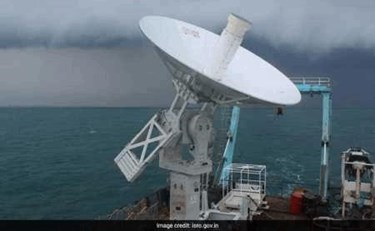India Launches Seaborne Antenna For Tracking Deep Space Missions
By Jof Enriquez,
Follow me on Twitter @jofenriq

The Indian Space Research Organisation (ISRO) Telemetry Tracking and Command Network (ISTRAC) completed the final sea trial of its new 4.6-meter ship-borne antenna system, designed to track and control satellite and deep space missions.
During the final system performance and validation testing, the antenna system mounted on the ship Sagar Manjusha – commissioned by the National Institute of Ocean Technology (NIOT) and positioned at the Bay of Bengal – successfully monitored India's Polar Satellite Launch Vehicle (PSLV-C38), reported The Times of India. The launch vehicle carried the 712 kg Cartosat-2 series satellite for earth observation for India's defense forces, along with 30 co-passenger satellites from 14 countries, as it launched into a 505 km polar Sun Synchronous Orbit (SSO) on June 23, 2017.
Built up to international state-of-the-art technical specifications indigenously in India, the seaborne system consists of a three-axis antenna mount, a motion simulator, reflector and feed, servo control systems and radio frequency electronics. It can be integrated with mobile telemetry, tracking and command (TTC) stations at mid-sea to track satellites that are beyond the reach of conventional ground station antenna.
"A ship-borne tracking system was very much needed as ISRO is planning for deep space missions. In addition to being tracked by ground stations in India, the Mangalyaan mission was also tracked in the Asia-Pacific," Dr. Mayank Vahia, an astrophysicist from Mumbai-based Tata Institute of Fundamental Research, told Sputnik.
Many of India’s future interplanetary and deep space missions will require information on vehicle trajectory and visibility requirement which can be gathered by TTC stations deployed at mid-sea, something the ship-borne antenna system can provide.
"As ISRO has planned deep space missions, including Chandrayaan and others, it will require the capability to track them beyond our territory and this is where this system will be used. As ISRO has already established a network of ground TTC stations, it already had the basic knowledge to build such a system," Vahia added.
India's Mars Orbiter Mission (MOM), also known as Mangalyaan, reached the Red Planet's orbit in 2014, becoming the first country to do so in its very first attempt. The country is aiming to land a rover on the moon next year, put a lander on Mars in 2021 or 2022, and reach Venus thereafter, according to Science Magazine.
